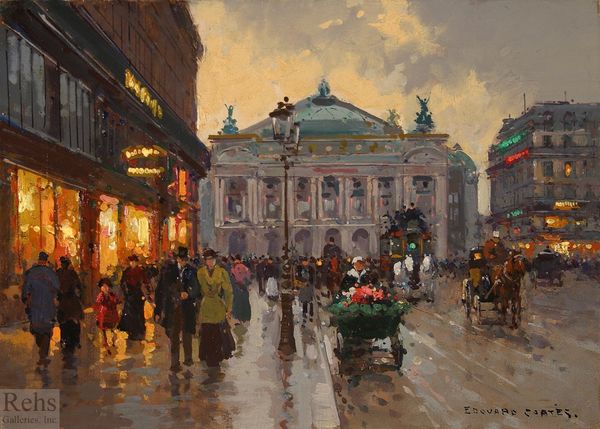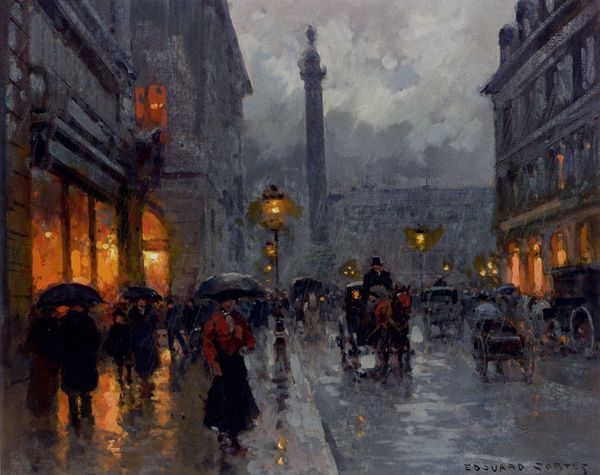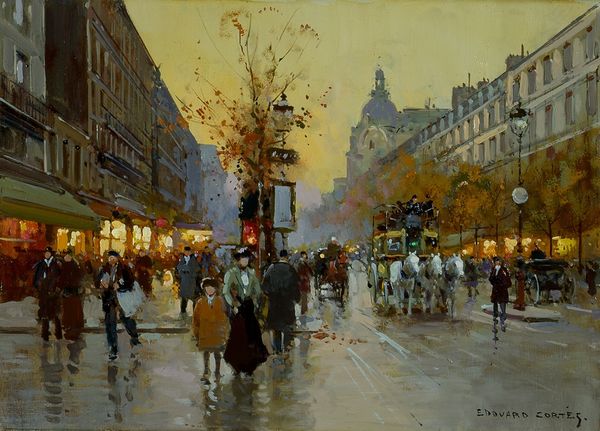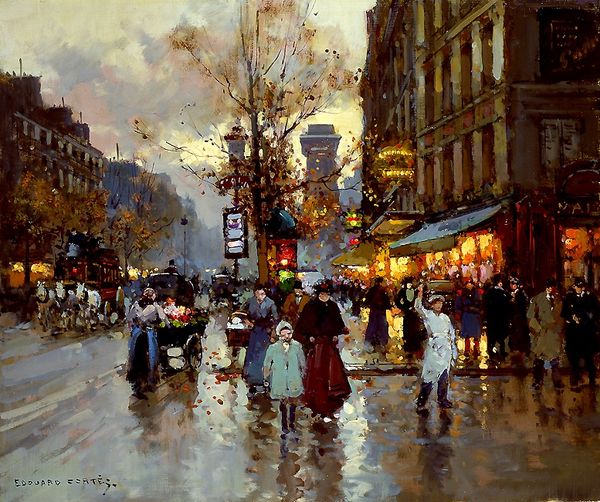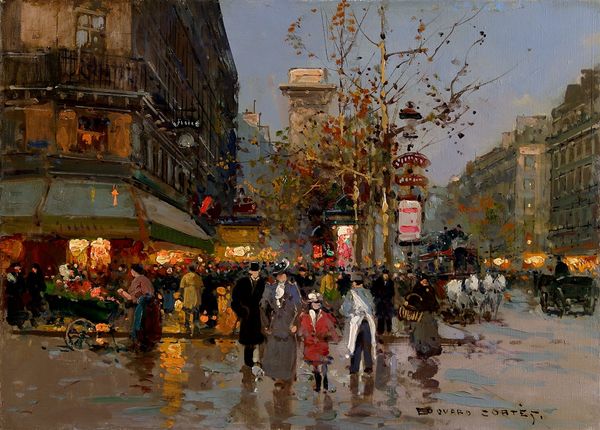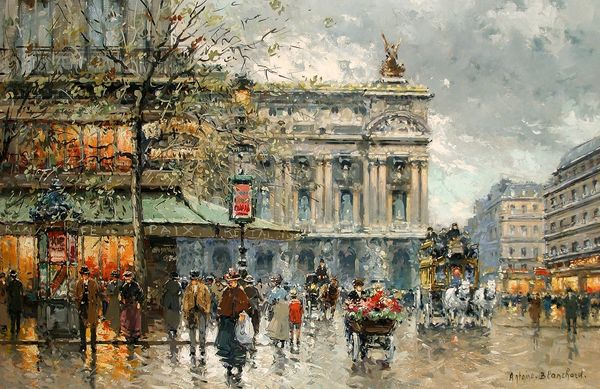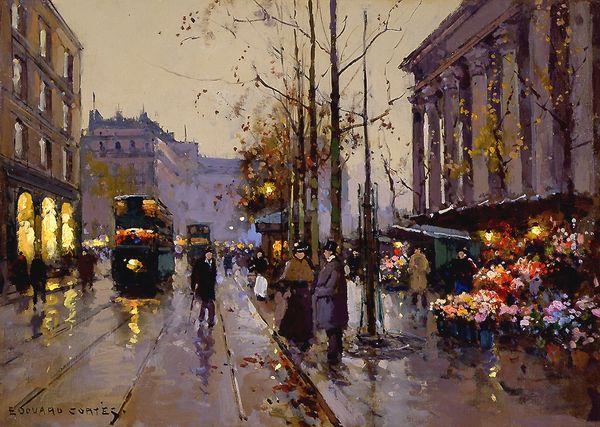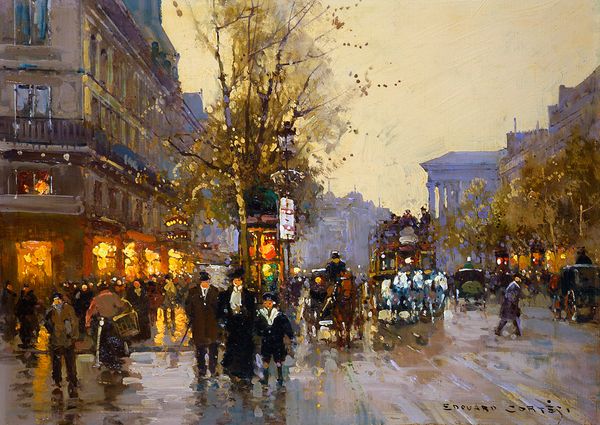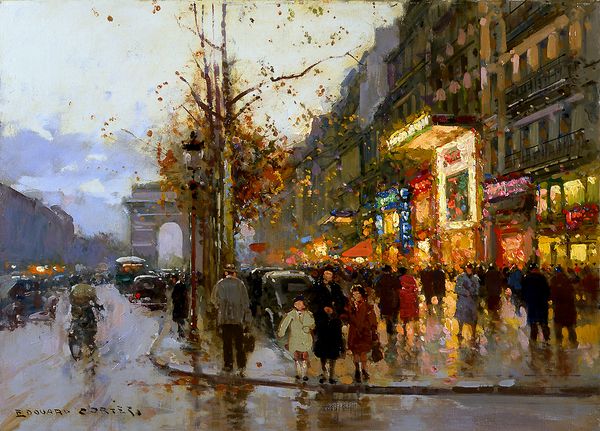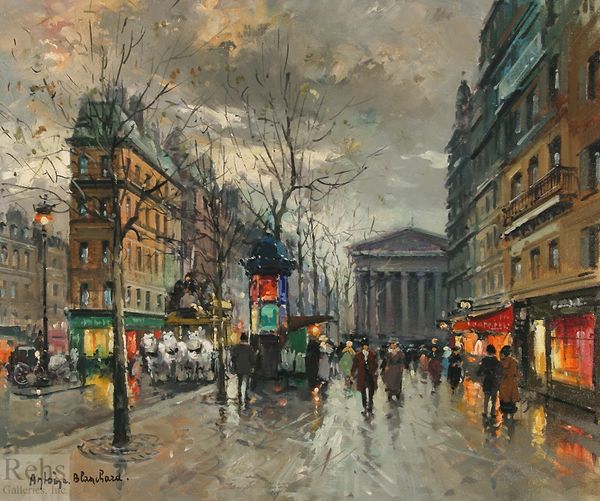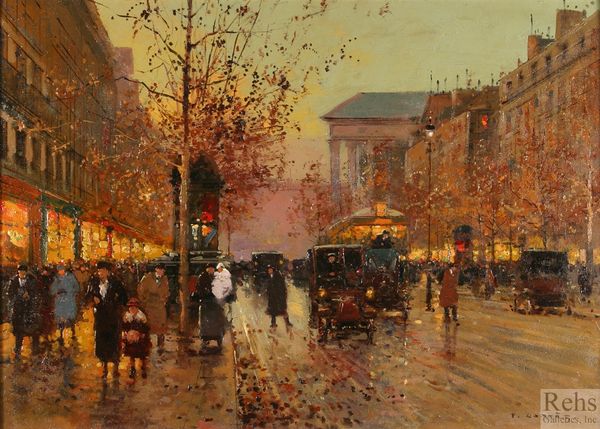
painting, plein-air, oil-paint, impasto
#
painting
#
impressionism
#
plein-air
#
oil-paint
#
oil painting
#
impasto
#
city scape
#
cityscape
#
genre-painting
Copyright: Edouard Cortes,Fair Use
Editor: This painting is called "The Place de l'Opera" by Edouard Cortes. It's an oil painting, and it really captures a rainy day in Paris. There’s almost a hazy glow to the scene, even with the muted colors. What do you see in this piece? Curator: Beyond the surface of a typical Parisian scene, I observe a subtle layering of cultural memory. The gas lamps, the horse-drawn carriages juxtaposed with the burgeoning electric lights—they speak to a society in transition. Notice how Cortes renders the Opera Garnier itself. It’s not merely a building; it's a symbol of Parisian identity, of spectacle, and perhaps even a veiled reference to the Belle Époque's excesses. Editor: I hadn't really thought about it like that. I was just seeing the pretty lights and the reflections on the street. The opera house just seemed to be...there. Curator: The “thereness” is crucial. Consider how often the Opera Garnier appears in Impressionist and Post-Impressionist works. It is more than architecture; it's shorthand for a specific moment in Parisian, and even European, consciousness. Each artist imbues it with their own understanding and commentary, contributing to its rich symbolic weight over time. Even in the rain, it beckons. Don't you think? Editor: That makes a lot of sense! Seeing it as a symbol rather than just a building really opens up how to think about other cityscape paintings too. Thank you! Curator: Indeed. The beauty of art lies in its capacity to be both aesthetically pleasing and culturally profound, speaking to us across generations.
Comments
No comments
Be the first to comment and join the conversation on the ultimate creative platform.
